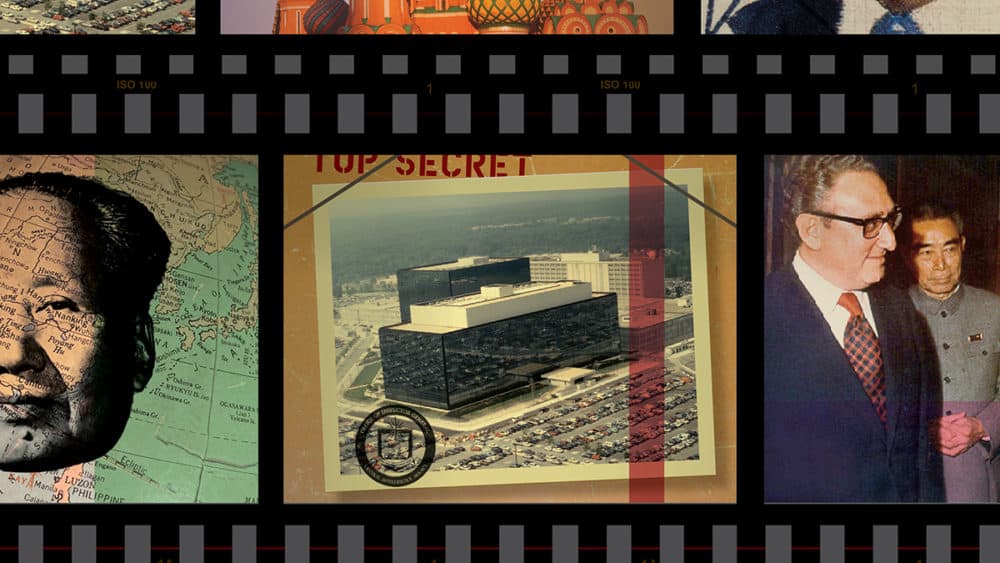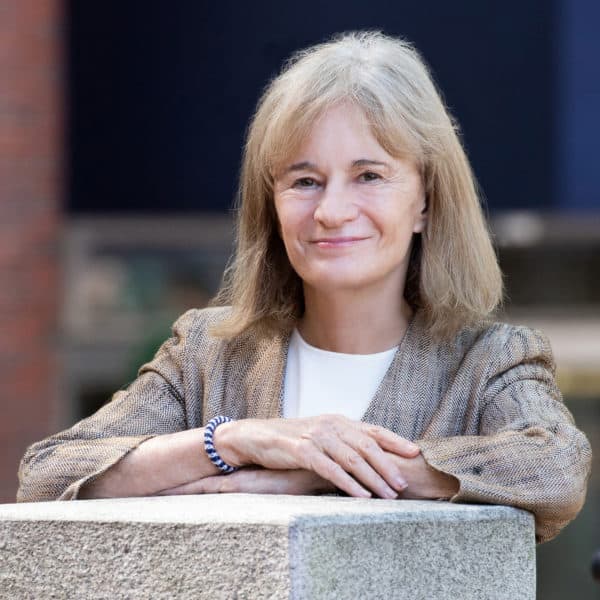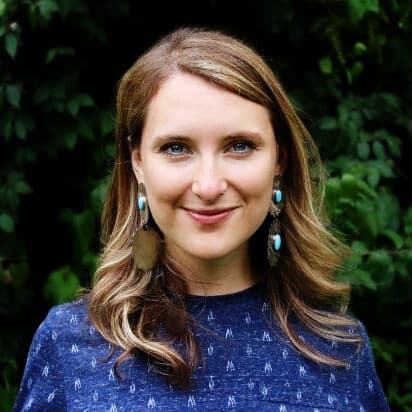Advertisement
The Great Wager
Shared secrets: How The U.S. and China worked together to spy on the Soviet Union
Resume
This is Part IV of The Great Wager. Click here for all five episodes.
It was the second day of President Richard Nixon's visit to China in February 1972, and national security adviser Henry Kissinger was having a serious meeting with a Chinese general, General Ye Jianying.
Kissinger was sharing top-secret information from the CIA about the Soviet military — and no one but Nixon and the people in the room knew what he was divulging.
Ye was like a kid in a candy shop, thrilled at the level of detail Kissinger was sharing, down to the exact kilotons in nuclear warheads.
This was just a taste of bigger things to come between the CIA and China.
New leaders, same enemy
In the years following Nixon's big trip, both countries underwent substantial changes in leadership.
In 1974, Nixon left the White House in disgrace. Two years later, Mao Zedong died, a huge event on the world stage.
Through all of this upheaval, China and the United States' common enemy stayed the same: the Soviet Union.
The new leader of China was Deng Xiaoping. Deng was more open to reform than Mao – and shared the U.S.’ anti-Soviet sentiment.
By the late 1970s, the Soviets had almost as many nuclear weapons as the Americans, and the U.S. was looking for means to confirm that the Soviet Union was abiding by arms control agreements.
U.S. intelligence officials determined that one of the best places to spy on the Soviets is from high on the mountains of Western China, not far from the Soviet border and close to an important Soviet test site.
China and the U.S. tentatively agreed in 1979 to operate joint spy stations, run by the CIA and by the intelligence arm of the Chinese military.
But even though Nixon’s trip was so successful, the Americans still hadn't established formal diplomatic relations with China — and China wouldn’t commit to building spy stations with the Americans until they did.
Finally, in January of 1979, President Jimmy Carter announced that the U.S. and the People’s Republic of China had agreed to recognize each other and establish diplomatic relations.
A secret visit
Three weeks later, Deng traveled to Washington, D.C., to celebrate — the first time a Communist Chinese leader had ever been to the U.S. He was welcomed warmly at the White House and The Kennedy Center.
But before Deng left Washington, he made one more stop — one that’s never been reported before.
Deng asked to visit the CIA headquarters in Virginia, a substantial request for a man representing a country that the U.S. hadn't even officially recognized until a few weeks before. Few foreign leaders had ever been invited into the inner sanctum of American intelligence.
For decades, no one knew about this trip. The Great Wager host Jane Perlez confirmed the information through CIA sources and in an interview with Former Defense Sec. Robert Gates.
Through her reporting, Perlez discovered that after Deng asked for the meeting, the CIA worked to arrange for a time when no American official would notice what Deng was doing. They scanned his schedule for “white time” — time Deng was scheduled to meet with his own Chinese officials, away from Americans. They found some on Deng’s last night in Washington.
He arrived at the headquarters in the dead of night. Everyone had gone home. CIA headquarters was basically empty.
Deng’s first stop was the command center. Intelligence officials let him see maps from American satellites, detailing the places where the U.S. and China planned to put the spy stations.
Deng then went up to the seventh floor, the inner sanctum, where he was greeted by the new director of the CIA, Stansfield Turner. Turner was a reformer, who had overhauled the CIA since the days of Nixon. Still, when it came to China, he was staying on the path that Nixon had forged.
Turner and Deng met for about 45 minutes — a relatively short meeting when you take into account time for interpreters. Still, the meeting marked a turning point in the U.S.-China relationship. Deng and Turner agreed that their two countries would build and run spy stations in Western China to spy on the Soviet missile program, allowing the Americans to keep tabs on the Soviets, and for the Chinese to get technology they’d never had access to before.
But before the CIA supplied the Chinese with the high-tech gear for the stations, they wanted even more confirmation to ensure that the Chinese would follow through on the agreement.
A few months after Deng’s visit, a delegation from Congress traveled to China. Among them was Joe Biden, then the junior senator from Delaware.
Fox Butterfield was The New York Times correspondent in China, the paper’s first to have access to the mainland run by the Communists. He recalls how Biden reached out and grabbed Deng’s hand to shake it.
“I think that Deng was very perplexed, if not horrified,” Butterfield said. “But Biden grabbed his hand and flashed a big smile and somehow got through.”
Biden asked Deng whether he’d really build the joint stations. And he got the confirmation the CIA needed: The stations were a go.
Project Chestnut
The exact details of the project, called Chestnut, remain top secret. Perlez’s requests under the Freedom of Information Act to the CIA and the state department are still unanswered. But she was able to confirm some details through her reporting.
Soon after Biden’s answer, giant American C-141 aircraft landed at Beijing airport, full of American equipment for the spy stations.
About two dozen American military technicians from the National Security Agency settled into Northwest Beijing to train the Chinese in how to operate the American computers, transmitters and radar.
Sensitive antennas were set up in concrete buildings out on the mountains in the Xinjiang region in Northwest China.
By the end of 1980, CIA Director Turner was ready to inspect the stations himself. He was joined by an entourage of aides, including Robert Gates, a Soviet expert at the CIA, who would later become the head of the CIA himself, and, after that, secretary of defense.
“My role on the trip was to brief the Chinese side on what the Soviets were doing militarily and politically,” Gates said. “My whole presence there in a way symbolized the anti-Soviet nature of the entire arrangement.”
The trip, like the spy stations themselves, was a secret. Gates remembers that Turner grew a mustache for the trip and donned a Polish worker’s cap.
“We tried not to be too obvious, but in some ways, I think that made us all the more obvious,” Gates said.
The CIA had considered China the enemy for more than two decades — and now they were sitting down with each other.
“To be a CIA officer and not feel like we were about to get arrested in the middle of Beijing was a pinch-me moment for sure,” Gates said.
Turner met Deng at a rundown house in the central part of Beijing, where they could meet unnoticed.
The visit catalyzed a decade or so of a successful intelligence partnership. An American CIA technician who visited the stations from time to time recalled what the spy stations were like.
The American technicians would fly to Ürümqi, the capital of Xinjiang province, before boarding a tiny plane to a little airport near the Soviet border, followed by a drive on a bumpy, country road through the mountainous desert, before they finally reached the remote spy stations. The Americans almost always went in pairs in part because the stations were so isolated, the CIA worried about their mental health if they went alone.
The spy stations were stocked with beer and SPAM, a favorite snack of the Chinese posted there. Being so close to the testing sites, they could see the lights from the Soviet missiles, a reminder of their common enemy and their bond.
In some ways, it was the realization of Nixon’s vision: a relationship that disadvantaged the Soviets and solidified America's upper hand in the Cold War. His wager had paid off. China was a friend, and the U.S. was reaping the intelligence benefits.
But what would happen after their shared rival, the Soviet Union, disappeared?
Show notes
Want to know more? Here are some of the resources The Great Wager team consulted during reporting and production.
Oral histories
State Department memos
Books
- Bass, Gary, J. The Blood Telegram: Nixon, Kissinger, and a Forgotten Genocide, Alfred A. Knopf, 2014.
- Gates, Robert M. From The Shadows,. Simon and Schuster, 2011.
- Lilley, James and Jeffrey. China Hands. Nine Decades of Adventure, Espionage and Diplomacy in Asia, Public Affairs, 2005.
- Tyler, Patrick. “A Great Wall: Six Presidents and China.” Public Affairs, 2000.
Documentaries
- “History Declassified: Nixon in China.” National Security Archive, 2004
- “Nixon in China.” Compilation of Audiovisual Materials, Richard Nixon Presidential Library. 2012
- “Nixon’s China Game.” PBS. 2000.
- “Playing The China Card.” Brook Lapping TV Series. 1999.
- “Looking Back on 1972: The Diary of Nixon’s Visit to China.” Phoenix TV. 2012.
The Great Wager was reported by Jane Perlez and produced by Grace Tatter. Special thanks to The Belfer Center, The John F. Kennedy School of Government, Harvard University; Luz Ding, researcher; William Burr and the National Security Archive; Susan R. Johnson, Association for Diplomatic Studies and Training; Ryan Pettigrew, the Richard Nixon Presidential Library; Lucas Nichter, Texas A&M University; Roger Lewis at Ground Zero Books; Jane Perlez’s colleagues in the Beijing bureau of The New York Times; Chas Freeman; Fredrik Logevall, Harvard University; Amb. Winston Lord; Patrick Tyler, journalist and author; and author James Mann.
The Great Wager is funded in part by a grant from the Henry Luce Foundation.
The Great Wager series collage artwork is created by WBUR. Images used are from www.archives.gov, www.alamy.com and www.istock.com. Photo credits: iStock.com: mphillips007/ Ensup / bndart / traveler1116 / sinopics / andDraw / Kateywhat. alamy.com: The Color Archives / Shim Harno / 360b / INTERFOTO. National Archives: 194412 / 194759
This segment aired on February 18, 2022.

